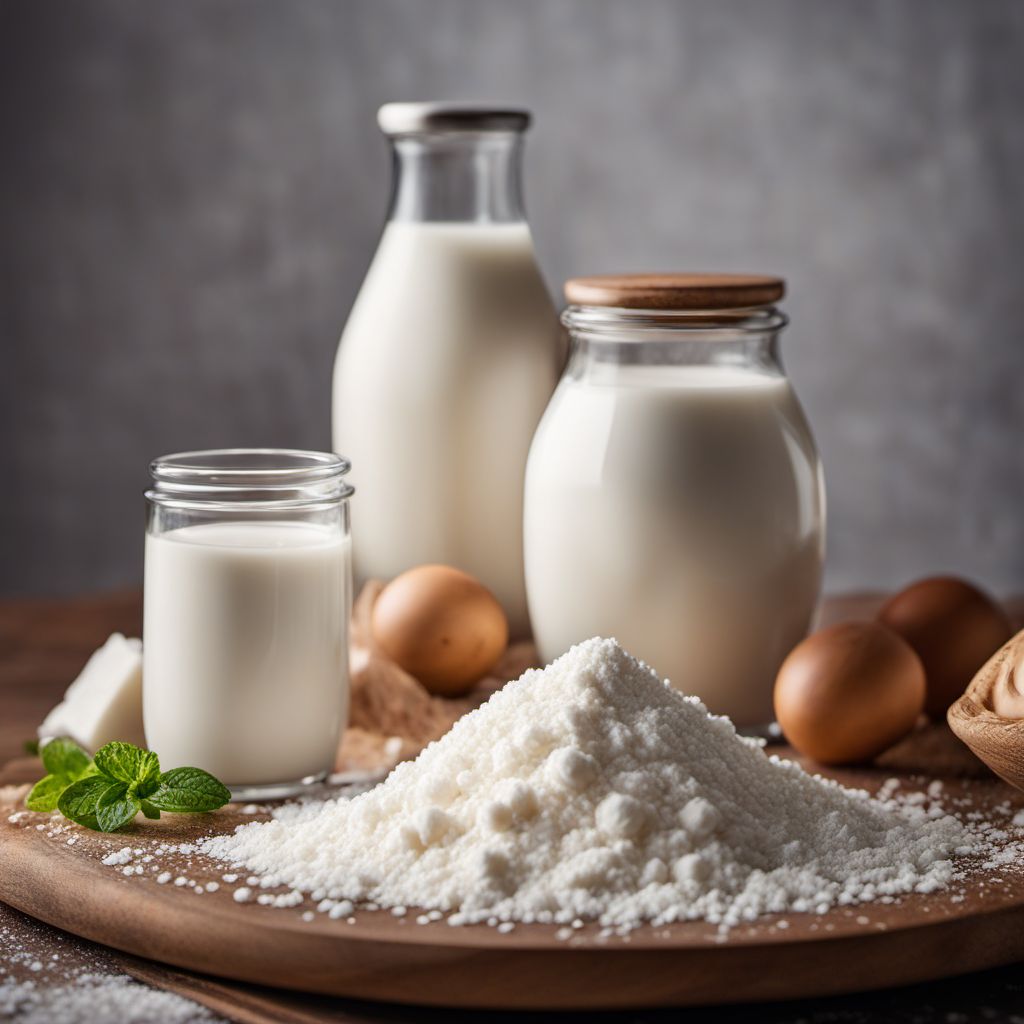
Ingredient
Milk and dairy powders
The Creamy Delights
Milk and dairy powders are derived from milk and undergo a process of dehydration to remove the moisture content. They come in various forms, including whole milk powder, skim milk powder, and buttermilk powder. These powders are known for their ability to enhance flavors, thicken sauces, and provide a creamy texture to baked goods. They are a staple in both sweet and savory recipes, making them a must-have in any kitchen.
Origins and history
The use of milk and dairy products dates back thousands of years, with evidence of their consumption found in ancient civilizations such as Egypt and Mesopotamia. Milk and dairy powders have played a significant role in culinary traditions worldwide, providing a convenient and long-lasting alternative to fresh milk. Today, they are widely used in the food industry for their versatility and extended shelf life.
Nutritional information
Milk and dairy powders are a good source of essential nutrients, including calcium, protein, and vitamins. They also contain varying amounts of fat, depending on the type of powder. However, it is important to note that some dairy powders may have added sugars or other additives, so it is advisable to check the label for specific nutritional information.
Allergens
Milk and dairy powders may contain lactose, making them unsuitable for individuals with lactose intolerance or milk allergies.
How to select
When selecting milk and dairy powders, look for products that are well-sealed and have a long shelf life. Check for any signs of moisture or clumping, as this may indicate poor quality or improper storage. Opt for reputable brands or sources to ensure the highest quality and safety of the product.
Storage recommendations
To maintain the freshness and quality of milk and dairy powders, store them in a cool, dry place away from direct sunlight. Once opened, transfer the powder to an airtight container to prevent moisture absorption and clumping. Avoid storing them near strong-smelling foods, as they can easily absorb odors.
How to produce
Producing milk and dairy powders requires specialized equipment and processes that are typically carried out in large-scale dairy facilities. It is not feasible for amateurs to produce these powders at home.
Preparation tips
Milk and dairy powders can be reconstituted by mixing them with water or other liquids to achieve the desired consistency. They can be used in a variety of recipes, such as soups, sauces, baked goods, and desserts. When using milk powder as a substitute for fresh milk, follow the instructions on the packaging for the correct ratio of powder to liquid. For baking, consider adjusting the amount of liquid in the recipe to account for the additional moisture provided by the powder.
Culinary uses
Milk and dairy powders are widely used in both sweet and savory dishes. They are commonly used in baking, such as in cakes, cookies, and bread. They are also used in the preparation of creamy sauces, soups, and desserts, adding richness and depth of flavor. Additionally, milk and dairy powders are often incorporated into beverages, such as milkshakes and hot chocolate, for a creamy and indulgent experience.
Availability
Milk and dairy powders are available in most grocery stores, supermarkets, and online retailers worldwide.




